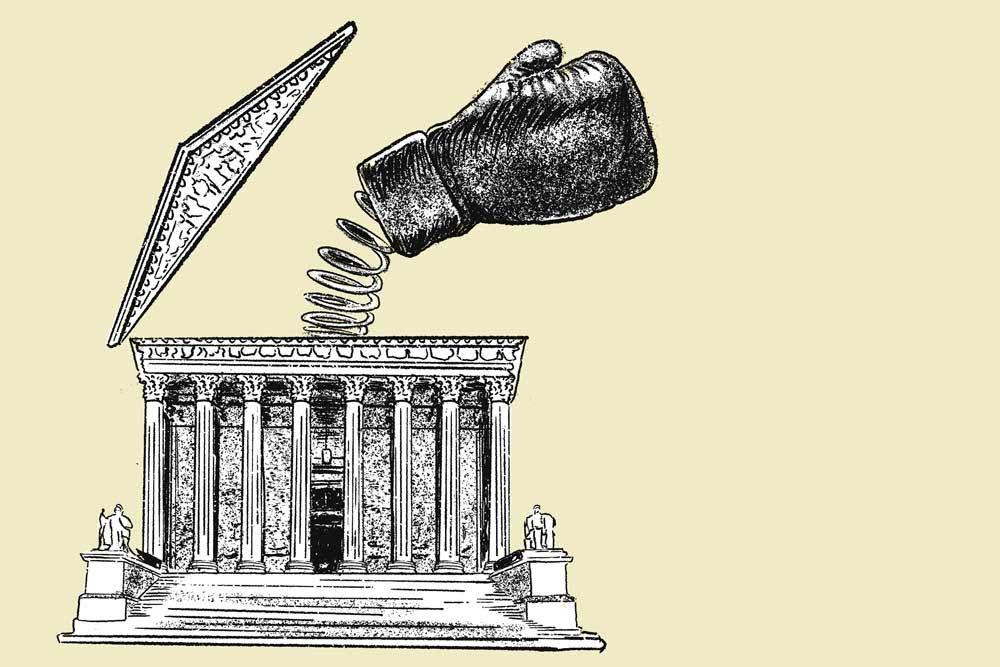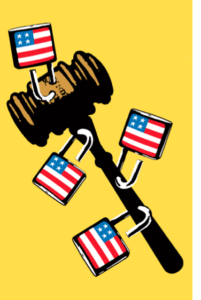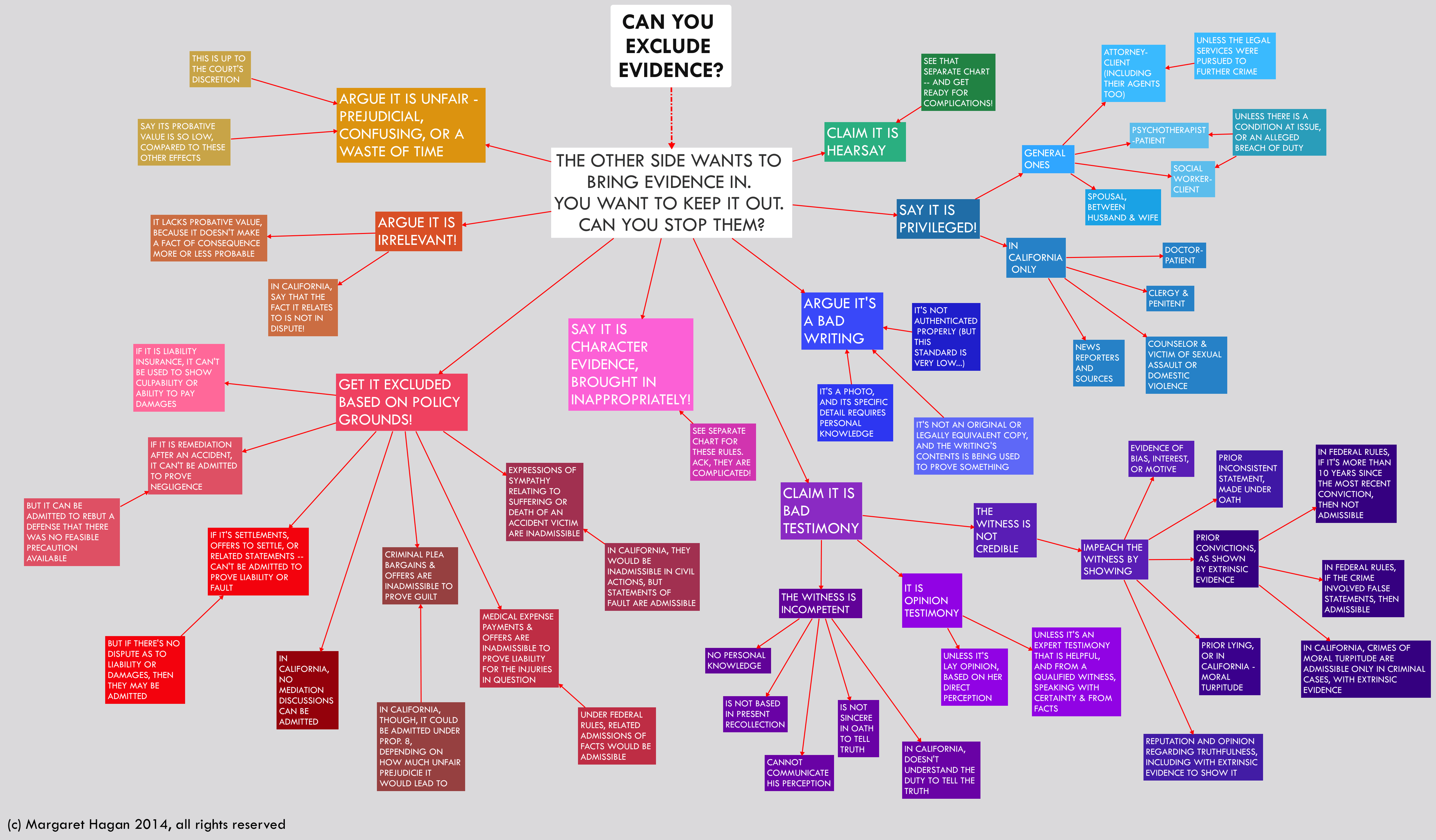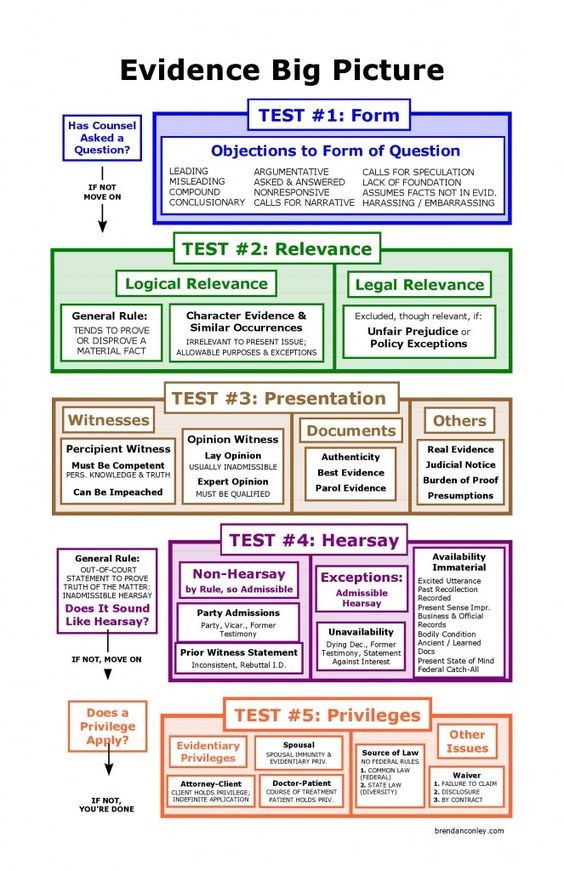Law Enforcement Misconduct
INVESTIGATIONS AND PROSECUTIONS
The Department of Justice (“The Department”) vigorously investigates and, where the evidence permits, prosecutes allegations of Constitutional violations by law enforcement officers. The Department’s investigations most often involve alleged uses of excessive force, but also include sexual misconduct, theft, false arrest, and deliberate indifference to serious medical needs or a substantial risk of harm to a person in custody. These cases typically involve police officers, jailers, correctional officers, probation officers, prosecutors, judges, and other federal, state, or local law enforcement officials. The Department’s authority extends to all law enforcement conduct, regardless of whether an officer is on or off duty, so long as he/she is acting, or claiming to act, in his/her official capacity.
In addition to Constitutional violations, the Department prosecutes law enforcement officers for related instances of obstruction of justice. This includes attempting to prevent a victim or witnesses from reporting the misconduct, lying to federal, state, or local officials during the course of an investigation into the potential misconduct, writing a false report to conceal misconduct, or fabricating evidence.
The principles of federal prosecution, set forth in the United States Attorneys’ Manual (“USAM”), require federal prosecutors to meet two standards in order to seek an indictment.
First, the government must be convinced that the potential defendant committed a federal crime. Second, the government must also conclude that the government would be likely to prevail at trial, where the government must prove the charges beyond a reasonable doubt. See USAM § 9-27.220.[1]
[1] The USAM provides only internal Department of Justice guidance. It is not intended to, does not, and may not be relied upon to create any rights, substantive or procedural, enforceable at law by any party in any matter civil or criminal. Nor are any limitations hereby placed on otherwise lawful litigative prerogatives of the Department of Justice.
ABOUT THE LAW ENFORCEMENT MISCONDUCT STATUTE
The federal criminal statute that enforces Constitutional limits on conduct by law enforcement officers is 18 U.S.C. § 242. Section 242 provides in relevant part:
“Whoever, under color of any law, …willfully subjects any person…to the deprivation of any rights, privileges, or immunities secured or protected by the Constitution or laws of the United States [shall be guilty of a crime].”
Section 242 is intended to “protect all persons in the United States in their civil rights, and furnish the means of their vindication.” Screws v. United States, 325 U.S. 91, 98 (1945) (quoting legislative history).
To prove a violation of § 242, the government must prove each of the following elements beyond a reasonable doubt: (1) that the defendant deprived a victim of a right protected by the Constitution or laws of the United States, (2) that the defendant acted willfully, and (3) that the defendant was acting under color of law. A violation of § 242 is a felony if one of the following conditions is met: the defendant used, attempted to use, or threatened to use a dangerous weapon, explosive or fire; the victim suffered bodily injury; the defendant’s actions included attempted murder, kidnapping or attempted kidnapping, aggravated sexual abuse or attempted aggravated sexual abuse, or the crime resulted in death. Otherwise, the violation is a misdemeanor.
Establishing the intent behind a Constitutional violation requires proof beyond a reasonable doubt that the law enforcement officer knew what he/she was doing was wrong and against the law and decided to do it anyway. Therefore, even if the government can prove beyond a reasonable doubt that an individual’s Constitutional right was violated, § 242 requires that the government prove that the law enforcement officer intended to engage in the unlawful conduct and that he/she did so knowing that it was wrong or unlawful. See Screws v. United States, 325 U.S. 91, 101-107 (1945). Mistake, fear, misperception, or even poor judgment does not constitute willful conduct prosecutable under the statute.
Physical Assault
In cases of physical assault, such as allegations of excessive force by an officer, the underlying Constitutional right at issue depends on the custodial status of the victim. If the victim has just been arrested or detained, or if the victim is being held in jail but has not yet been convicted, the government must, in most cases, prove that that the law enforcement officer used more force than is reasonably necessary to arrest or gain control of the victim. This is an objective standard dependent on what a reasonable officer would do under the same circumstances. “The ‘reasonableness’ of a particular use of force must be judged from the perspective of a reasonable officer on the scene, rather than with the 20/20 vision of hindsight.” Graham v. Connor, 490 U.S. 386, 396-97 (1989).
If the victim is a convicted prisoner, the government must show that the law enforcement officer used physical force to punish , retaliate against, an inmate, or otherwise cause harm to the prisoner, rather than to protect the officer or others from harm or to maintain order in the facility. See Whitley v. Albers, 475 U.S. 312, 319 (1986).
Sexual Misconduct
Law enforcement officers who engage in nonconsensual sexual contact with persons in their custody deprive those persons of liberty without due process of law, which includes the right to bodily integrity. The Department investigates and prosecutes instances of nonconsensual sexual misconduct committed by patrol officers, federal and state probation officers, wardens, and corrections officers, among others. Sexual misconduct includes, but is not limited to, sexual assault without consent (rape), sexual contact procured by force, threat of force or coercion, and unwanted or gratuitous sexual contact such as touching or groping.
To prove that a law enforcement officer violated a victim’s right to bodily integrity, the government must prove that the victim did not consent to the defendant’s actions. Prosecutors can establish lack of consent or submission by showing that the defendant officer used either force or coercion to overcome the victim’s will. It is not necessary to prove that the defendant used actual violence against the victim. Coercion may exist if a victim is told that an officer will bring false charges or cause the victim to suffer unjust punishment.
Deliberate Indifference to a Serious Medical Condition or a Substantial Risk of Harm
Section 242 prohibits a law enforcement officer from acting with deliberate indifference to a substantial risk of harm to persons in custody. Therefore, an officer cannot deliberately ignore a serious medical condition of or risk of serious harm (such as a risk that an inmate will be assaulted by other inmates or officers) to a person in custody. To prove deliberate indifference, the government must prove that the victim faced a substantial risk of serious harm; that the officer had actual knowledge of the risk of harm; and that the officer failed to take reasonable measures to abate it.
Failure to Intervene
An officer who purposefully allows a fellow officer to violate a victim’s Constitutional rights may be prosecuted for failure to intervene to stop the Constitutional violation. To prosecute such an officer, the government must show that the defendant officer was aware of the Constitutional violation, had an opportunity to intervene, and chose not to do so. This charge is often appropriate for supervisory officers who observe uses of excessive force without stopping them, or who actively encourage uses of excessive force but do not directly participate in them. source
We found 85,000 cops who’ve been investigated for misconduct. Now you can read their records.
10 Examples of Police Misconduct to Refer to for Your Case
Police misconduct is any action done by a police officer that is illegal, inappropriate, or against police policies. This is a broad concept that can range from using excessive force, performing illegal searches, selective law enforcement, racial profiling, and even sexual assault.
What are The Different Types of Police Misconduct?
Because many of these actions and concepts are broad and non-specific, it can be hard to delve into exactly what problems these cases involve. But skilled criminal defense attorneys can often use police intimidation to get criminal charges dismissed or even bring a civil claim against police for financial damages.
We’re going to go over 10 examples of police misconduct cases so you can see exactly what are the different types of police misconduct, and how it plays out in court.
1. Philando Castile Case
The Philando Castile case is one of the most famous police brutality cases to come up since Rodney King’s assault in 1992. So what happened?
Philando Castile was driving in a car with his girlfriend and his girlfriend’s daughter. He was then pulled over by Officer Jeronimo Yanez. Mr. Castile immediately reported to the officer that he had a legal gun in his possession.
The events that happened next are the example of police officer misconduct: Yanez tells Castile not to reach for his gun. Castile replies that he is not going to reach for his gun and that he is going to reach for his ID. His girlfriend, and police body footage, corroborate this story.
However, Yanez does not listen and fires 7 shots into the car, killing Castile. This is considered excessive use of force, especially considering that there was an unarmed person and child in the car when Yanez fired 7 shots at close range.
Yanez was charged with manslaughter and acquitted. However, he was removed from his position as a police officer and Castile’s girlfriend received over 800,000 dollars in settlements from the city.
2. Lying to Investigators
When police officers make an arrest, they’re required to tell the investigators that often take over the case all of the details and information they can. Lying to investigators about anything involving the arrest or the case is an example of police officer misconduct. This can be considered an obstruction of justice as well as going against police rules and regulations.
After the Mike Brown case in Ferguson, there was a huge Department of Justice probe into the racial profiling and misconduct performed by the Ferguson Police Department.
One thing they found in this report is that officers consistently lied to investigators about arrests, events, and interactions. One example given was that an officer lied about an altercation over the police loudspeaker.
This is a serious police misconduct laws offense, but the officer was only suspended for 12 hours (which, in fact, is another example of police officer misconduct, since that punishment doesn’t follow police regulations).
3. Ferguson Racial Profiling
That same report showed multiple examples of racial profiling within the FPD as well. Racial profiling occurs when officers and law enforcement officials use race or skin color as the basis for suspecting a crime.
This occurred a lot in Ferguson and is a prime example of police misconduct. The report showed that officers would target men of color, hold them, and then search whether there was a warrant out for their arrest (which is another example of police officer misconduct).
4. Planted Evidence
Officers planting evidence in order to make an arrest is a gross misuse of power and an example of police officer misconduct. A current case involving the premise of planting evidence involves Officer Richard Pinheiro of the Baltimore Police Department.
This case showed via body cam footage that Officer Pinheiro planted fake drug evidence in order to arrest a man on drug charges, which led to this man being held in jail for multiple months (all because of fake evidence).
This might be a problem within the Baltimore Police Department, seeing as another example of planted evidence was unearthed also because of body cam footage at a 2016 traffic stop.
5. Walter Scott Case
The Walter Scott case involves both the issue of planted evidence and police brutality. Attorneys involved in this case had to be both experts on police brutality, civil rights issues, and planted evidence in order to get a conviction.
If you want to learn more about or find lawyers that specialize in police brutality, check out these attorneys.
And get a conviction they did: the officer involved was sentenced to 20 years in prison for his involvement in the case. But what happened?
A cell phone video captured the events: Officer Michael Slager pulled over Walter Scott for an allegedly broken taillight. Scott and Slager apparently fought, and Scott fled the scene as Slager fired multiple shots at him (he was unarmed).
Slager is also seen to be placing his taser next to the body of Walter Scott, essentially planting evidence to make it seem like Scott was armed and using a weapon against him.
It was eventually ruled that Slager used excessive force and that Scott’s shooting death should be considered second-degree murder.
6. Sexual Assault and Rape
Some officers use their power to assault and rape alleged suspects. One example detailed how two New York City police officers arrested a young teenage woman for possession of marijuana. They loaded her into their unmarked police van and forced her to perform oral sex on them; they eventually raped her.
They threatened to charge her with crimes if she didn’t follow their orders. They’ve since been charged with multiple crimes including official police intimidation, sexual assault, kidnapping, and coercion.
7. Witness Tampering
Witness tampering is a type of misconduct where police officers attempt to change or alter witness testimony by bribes, threats, or other coercive measures. An example case of this occurred recently in Maui, Hawai’i.
Now former police officer Anthony Maldonado pulled over a vehicle in a routine traffic stop. During this stop, Maldonado noticed a large amount of cash in the car, so he stole it.
This in itself is an act of police intimidation referred to as theft under the law. That’s not where the misconduct ends, though. Once the man realized his money was stolen, he reported it to the police department.
Maldonado and four others tried to bribe the man to drop the charges and withdraw the complaint. This is considered witness tampering and is a serious example of police misconduct.
Maldonado is no longer on the force, and he faces years in prison for these actions.
8. Drunk Police Officer
Drinking or using drugs on duty is a huge violation of police rules and regulations, which makes it an example of police intimidation. A recent example: a former Georgia police officer was fired after his supervisor discovered him drunk while filing paperwork.
While this might seem relatively innocuous, image what could happen if a police officer was drunk on duty and got into their police vehicle. Or made an arrest while high. Or shot someone in a drunken rage. Or even made a huge error in paperwork that allowed a murderer to walk free.
Even the smallest example of police intimidation is a serious problem.
9. Rachelle Jackson
Rachelle Jackson of Chicago witnessed a horrific car accident involving Chicago police officers. She bravely ran to the car and pulled one of the officers out fearing that the vehicle was going to explode.
When other officers arrived, Jackson was immediately detained and was questioned about stealing the officer’s weapon and disarming a peace officer. She then went to jail for 10 months awaiting trial after she was threatened and essentially forced to sign a statement that officers made for her.
The case was dismissed by a judge and Jackson turned around and sued the officers involved and the city for a false arrest, coercive questioning, and malicious prosecution.
10. Eric Garner
The Eric Garner case is another example of police brutality as a form of police misconduct. He was allegedly selling illegal cigarettes on the street of Staten Island. He wasn’t threatening or being violent towards the officers.
The officers attempted to make an arrest and wrestled Garner to the ground. They then put him in a chokehold (an illegal maneuver for police officers to perform) when Garner said repeatedly that he couldn’t breathe.
“I can’t breathe” has become one of the rallying cries of the Black Lives Matter movement, a movement that focuses on the unfair and biased police brutality that mostly black men (but also any person of color) face.
Officers continued to press his head into the ground and kept him in a chokehold. He suffered neck injuries and died because of those compressions.
This case was considered to show police officers right that using illegal maneuvers and using excessive force. However, neither of the officers involved were charged with a crime.
The officer who put Garner in a chokehold was stripped of both his badge and his gun. His supervisor was also charged with failure to supervise and also stripped of her badge and gun.
10 Examples of Police Intimidation Cases: Wrapping Up
Police misconduct is a scary thought: police offers are supposed to be the people we trust to keep us safe. But, as these examples of what are the different types of police misconduct show, when police break the law or go against regulations, they can harm people’s lives forever.
Obtaining Police Records by State
To Learn More…. Read MORE Below and click the links Below
Abuse & Neglect – The Mandated Reporters (Police, D.A & Medical & the Bad Actors)
Mandated Reporter Laws – Nurses, District Attorney’s, and Police should listen up
If You Would Like to Learn More About: The California Mandated Reporting LawClick Here
To Read the Penal Code § 11164-11166 – Child Abuse or Neglect Reporting Act – California Penal Code 11164-11166Article 2.5. (CANRA) Click Here
Mandated Reporter formMandated ReporterFORM SS 8572.pdf – The Child Abuse
ALL POLICE CHIEFS, SHERIFFS AND COUNTY WELFARE DEPARTMENTS INFO BULLETIN:
Click Here Officers and DA’s for (Procedure to Follow)
It Only Takes a Minute to Make a Difference in the Life of a Child learn more below
You can learn more here California Child Abuse and Neglect Reporting Law its a PDF file
Learn More About True Threats Here below….
We also have the The Brandenburg v. Ohio (1969) – 1st Amendment
CURRENT TEST = We also have the The ‘Brandenburg test’ for incitement to violence – 1st Amendment
We also have the The Incitement to Imminent Lawless Action Test– 1st Amendment
We also have the True Threats – Virginia v. Black is most comprehensive Supreme Court definition – 1st Amendment
We also have the Watts v. United States – True Threat Test – 1st Amendment
We also have the Clear and Present Danger Test – 1st Amendment
We also have the Gravity of the Evil Test – 1st Amendment
We also have the Elonis v. United States (2015) – Threats – 1st Amendment
Learn More About What is Obscene…. be careful about education it may enlighten you
We also have the Miller v. California – 3 Prong Obscenity Test (Miller Test) – 1st Amendment
We also have the Obscenity and Pornography – 1st Amendment
Learn More About Police, The Government Officials and You….
$$ Retaliatory Arrests and Prosecution $$
Anti-SLAPP Law in California
Freedom of Assembly – Peaceful Assembly – 1st Amendment Right
Supreme Court sets higher bar for prosecuting threats under First Amendment 2023 SCOTUS
We also have the Brayshaw v. City of Tallahassee – 1st Amendment – Posting Police Address
We also have the Publius v. Boyer-Vine –1st Amendment – Posting Police Address
We also have the Lozman v. City of Riviera Beach, Florida (2018) – 1st Amendment – Retaliatory Police Arrests
We also have the Nieves v. Bartlett (2019) – 1st Amendment – Retaliatory Police Arrests
We also have the Hartman v. Moore (2006) – 1st Amendment – Retaliatory Police Arrests
Retaliatory Prosecution Claims Against Government Officials – 1st Amendment
We also have the Reichle v. Howards (2012) – 1st Amendment – Retaliatory Police Arrests
Retaliatory Prosecution Claims Against Government Officials – 1st Amendment
Freedom of the Press – Flyers, Newspaper, Leaflets, Peaceful Assembly – 1$t Amendment – Learn More Here
Vermont’s Top Court Weighs: Are KKK Fliers – 1st Amendment Protected Speech
We also have the Insulting letters to politician’s home are constitutionally protected, unless they are ‘true threats’ – Letters to Politicians Homes – 1st Amendment
We also have the First Amendment Encyclopedia very comprehensive – 1st Amendment
Sanctions and Attorney Fee Recovery for Bad Actors
FAM § 3027.1 – Attorney’s Fees and Sanctions For False Child Abuse Allegations – Family Code 3027.1 – Click Here
FAM § 271 – Awarding Attorney Fees– Family Code 271 Family Court Sanction Click Here
Awarding Discovery Based Sanctions in Family Law Cases – Click Here
FAM § 2030 – Bringing Fairness & Fee Recovery – Click Here
Zamos v. Stroud – District Attorney Liable for Bad Faith Action – Click Here
Malicious Use of Vexatious Litigant – Vexatious Litigant Order Reversed
Mi$Conduct – Pro$ecutorial Mi$Conduct Prosecutor$
Attorney Rule$ of Engagement – Government (A.K.A. THE PRO$UCTOR) and Public/Private Attorney
What is a Fiduciary Duty; Breach of Fiduciary Duty
The Attorney’s Sworn Oath
Malicious Prosecution / Prosecutorial Misconduct – Know What it is!
New Supreme Court Ruling – makes it easier to sue police
Possible courses of action Prosecutorial Misconduct
Misconduct by Judges & Prosecutor – Rules of Professional Conduct
Functions and Duties of the Prosecutor – Prosecution Conduct
Standards on Prosecutorial Investigations – Prosecutorial Investigations
Information On Prosecutorial Discretion
Why Judges, District Attorneys or Attorneys Must Sometimes Recuse Themselves
Fighting Discovery Abuse in Litigation – Forensic & Investigative Accounting – Click Here
Criminal Motions § 1:9 – Motion for Recusal of Prosecutor
Pen. Code, § 1424 – Recusal of Prosecutor
Removing Corrupt Judges, Prosecutors, Jurors and other Individuals & Fake Evidence from Your Case
National District Attorneys Association puts out its standards
National Prosecution Standards – NDD can be found here
The Ethical Obligations of Prosecutors in Cases Involving Postconviction Claims of Innocence
ABA – Functions and Duties of the Prosecutor – Prosecution Conduct
Prosecutor’s Duty Duty to Disclose Exculpatory Evidence Fordham Law Review PDF
Chapter 14 Disclosure of Exculpatory and Impeachment Information PDF
Mi$Conduct – Judicial Mi$Conduct Judge$
Prosecution Of Judges For Corrupt Practice$
Code of Conduct for United States Judge$
Disqualification of a Judge for Prejudice
Judicial Immunity from Civil and Criminal Liability
Recusal of Judge – CCP § 170.1 – Removal a Judge – How to Remove a Judge
l292 Disqualification of Judicial Officer – C.C.P. 170.6 Form
How to File a Complaint Against a Judge in California?
Commission on Judicial Performance – Judge Complaint Online Form
Why Judges, District Attorneys or Attorneys Must Sometimes Recuse Themselves
Removing Corrupt Judges, Prosecutors, Jurors and other Individuals & Fake Evidence from Your Case
DUE PROCESS READS>>>>>>
Due Process vs Substantive Due Process learn more HERE
Understanding Due Process – This clause caused over 200 overturns in just DNA alone Click Here
Mathews v. Eldridge – Due Process – 5th, & 14th Amendment
Mathews Test – 3 Part Test– Amdt5.4.5.4.2 Mathews Test
“Unfriending” Evidence – 5th Amendment
At the Intersection of Technology and Law
We also have the Introducing TEXT & EMAIL Digital Evidence in California Courts – 1st Amendment
so if you are interested in learning about Introducing Digital Evidence in California State Courts
click here for SCOTUS rulings
Right to Travel freely – When the Government Obstructs Your Movement – 14th Amendment & 5th Amendment
What is Probable Cause? and.. How is Probable Cause Established?
Misuse of the Warrant System – California Penal Code § 170 – Crimes Against Public Justice – 4th, 5th, & 14th Amendment
What Is Traversing a Warrant (a Franks Motion)?
Dwayne Furlow v. Jon Belmar – Police Warrant – Immunity Fail – 4th, 5th, & 14th Amendment
Obstruction of Justice and Abuse of Process
What Is Considered Obstruction of Justice in California?
Penal Code 135 PC – Destroying or Concealing Evidence
Penal Code 141 PC – Planting or Tampering with Evidence in California
Penal Code 142 PC – Peace Officer Refusing to Arrest or Receive Person Charged with Criminal Offense
Penal Code 182 PC – “Criminal Conspiracy” Laws & Penalties
Penal Code 664 PC – “Attempted Crimes” in California
Penal Code 32 PC – Accessory After the Fact
Penal Code 31 PC – Aiding and Abetting Laws
What is Abuse of Process?
What is a Due Process Violation? – 4th Amendment & 14th Amendment
What’s the Difference between Abuse of Process, Malicious Prosecution and False Arrest?
Defeating Extortion and Abuse of Process in All Their Ugly Disguises
The Use and Abuse of Power by Prosecutors (Justice for All)
ARE PEOPLE LYING ON YOU?
CAN YOU PROVE IT? IF YES…. THEN YOU ARE IN LUCK!
Penal Code 118 PC – California Penalty of “Perjury” Law
Federal Perjury – Definition by Law
Penal Code 132 PC – Offering False Evidence
Penal Code 134 PC – Preparing False Evidence
Penal Code 118.1 PC – Police Officer$ Filing False Report$
Spencer v. Peters– Police Fabrication of Evidence – 14th Amendment
Penal Code 148.5 PC – Making a False Police Report in California
Penal Code 115 PC – Filing a False Document in California
Misconduct by Government Know Your Rights Click Here
Under 42 U.S.C. $ection 1983 – Recoverable Damage$
42 U.S. Code § 1983 – Civil Action for Deprivation of Right$
18 U.S. Code § 242 – Deprivation of Right$ Under Color of Law
18 U.S. Code § 241 – Conspiracy against Right$
Section 1983 Lawsuit – How to Bring a Civil Rights Claim
Suing for Misconduct – Know More of Your Right$
Police Misconduct in California – How to Bring a Lawsuit
How to File a complaint of Police Misconduct? (Tort Claim Forms here as well)
Deprivation of Rights – Under Color of the Law
What is Sua Sponte and How is it Used in a California Court?
Removing Corrupt Judges, Prosecutors, Jurors
and other Individuals & Fake Evidence from Your Case
Anti-SLAPP Law in California
Freedom of Assembly – Peaceful Assembly – 1st Amendment Right
How to Recover “Punitive Damages” in a California Personal Injury Case
Pro Se Forms and Forms Information(Tort Claim Forms here as well)
What is Tort?
Tort Claims Form
File Government Claim for Eligible Compensation
Complete and submit the Government Claim Form, including the required $25 filing fee or Fee Waiver Request, and supporting documents, to the GCP.
See Information Guides and Resources below for more information.
Tort Claims – Claim for Damage, Injury, or Death (see below)
Federal – Federal SF-95 Tort Claim Form Tort Claim online here or download it here or here from us
California – California Tort Claims Act – California Tort Claim Form Here or here from us
Complaint for Violation of Civil Rights (Non-Prisoner Complaint) and also UNITED STATES DISTRICT COURT PDF
Taken from the UNITED STATES DISTRICT COURT FOR THE EASTERN DISTRICT OF CALIFORNIA Forms source
WRITS and WRIT Types in the United States
How do I submit a request for information?
To submit a request send the request via mail, fax, or email to the agency. Some agencies list specific departments or people whose job it is to respond to PRA requests, so check their websites or call them for further info. Always keep a copy of your request so that you can show what you submitted and when.
Templates for Sample Requests
Incident Based Request: Use this template if you want records related to a particular incident, like the investigative record for a specific police shooting, an arrest where you believe an officer may have been found to have filed a false report, or to find out whether complaint that an officer committed sexual assault was sustained.
ACLU Download Word document | ACLU Download PDF
or from us Download Word document | or from us Download PDF
Officer Based Request: Use this template if you want to find any public records of misconduct related to a particular officer or if he or she has been involved in past serious uses of force.
ACLU Download Word document | ACLU Download PDF
or from us Download Word document | or from us Download PDF
The First Amendment Coalition also has some useful information to help explain the PRA process.
Sample Letter | SB 1421 & SB 16 Records
Appealing/Contesting Case/Order/Judgment/Charge/ Suppressing Evidence
First Things First: What Can Be Appealed and What it Takes to Get Started – Click Here
Options to Appealing– Fighting A Judgment Without Filing An Appeal Settlement Or Mediation
Cal. Code Civ. Proc. § 1008 Motion to Reconsider
Penal Code 1385 – Dismissal of the Action for Want of Prosecution or Otherwise
Penal Code 1538.5 – Motion To Suppress Evidence in a California Criminal Case
CACI No. 1501 – Wrongful Use of Civil Proceedings
Penal Code “995 Motions” in California – Motion to Dismiss
WIC § 700.1 – If Court Grants Motion to Suppress as Evidence
Suppression Of Exculpatory Evidence / Presentation Of False Or Misleading Evidence – Click Here
Notice of Appeal — Felony (Defendant) (CR-120) 1237, 1237.5, 1538.5(m) – Click Here
California Motions in Limine – What is a Motion in Limine?
Petition for a Writ of Mandate or Writ of Mandamus (learn more…)
PC 1385 – Dismissal of the Action for Want of Prosecution or Otherwise
Retrieving Evidence / Internal Investigation Case
Conviction Integrity Unit (“CIU”) of the Orange County District Attorney OCDA – Click Here
Fighting Discovery Abuse in Litigation – Forensic & Investigative Accounting – Click Here
Orange County / LA County Data, BodyCam, Police Report, Incident Reports,
and all other available known requests for data below:
SEARCH SB-1421 SB-16 Incidents of LA County, Oakland
California Senate Bill 16 (SB 16) – 2023-2024 – Peace officers: Release of Records
APPLICATION TO EXAMINE LOCAL ARREST RECORD UNDER CPC 13321 Click Here
Learn About Policy 814: Discovery Requests OCDA Office – Click Here
Request for Proof In-Custody Form Click Here
Request for Clearance Letter Form Click Here
Application to Obtain Copy of State Summary of Criminal HistoryForm Click Here
Request Authorization Form Release of Case Information – Click Here
Texts / Emails AS EVIDENCE: Authenticating Texts for California Courts
Can I Use Text Messages in My California Divorce?
Two-Steps And Voila: How To Authenticate Text Messages
How Your Texts Can Be Used As Evidence?
California Supreme Court Rules:
Text Messages Sent on Private Government Employees Lines
Subject to Open Records Requests
case law: City of San Jose v. Superior Court – Releasing Private Text/Phone Records of Government Employees
Public Records Practices After the San Jose Decision
The Decision Briefing Merits After the San Jose Decision
Rules of Admissibility – Evidence Admissibility
Confrontation Clause – Sixth Amendment
Exceptions To The Hearsay Rule – Confronting Evidence
Prosecutor’s Obligation to Disclose Exculpatory Evidence
Successful Brady/Napue Cases – Suppression of Evidence
Cases Remanded or Hearing Granted Based on Brady/Napue Claims
Unsuccessful But Instructive Brady/Napue Cases
ABA – Functions and Duties of the Prosecutor – Prosecution Conduct
Frivolous, Meritless or Malicious Prosecution – fiduciary duty
Section 832.7 – Peace officer or custodial officer personnel records
Senate Bill No. 1421 – California Public Records Act
Assembly Bill 748 Makes Video Evidence Captured by Police Agencies Subject to Disclosure as Public Records
SB 2, Creating Police Decertification Process and Expanding Civil Liability Exposure
The Right To Know: How To Fulfill The Public’s Right Of Access To Police Records
How Access to California Police Records
Los Angeles County Sheriff’s Department SB-1421 Records
SB1421 – Form Access to California Police Records
California Statewide CPRA Requests Submit a CPRA Request
Electronic Audio Recording Request of OC Court Hearings
CPRA Public Records Act Data Request – Click Here
Here is the Public Records Service Act Portal for all of CALIFORNIA Click Here
Police BodyCam Footage Release
Cleaning Up Your Record
Tossing Out an Inferior Judgement – When the Judge Steps on Due Process – California Constitution Article VI – Judicial Section 13
Penal Code 851.8 PC – Certificate of Factual Innocence in California
Petition to Seal and Destroy Adult Arrest Records – Download the PC 851.8 BCIA 8270 Form Here
SB 393: The Consumer Arrest Record Equity Act – 851.87 – 851.92 & 1000.4 – 11105 – CARE ACT
Expungement California – How to Clear Criminal Records Under Penal Code 1203.4 PC
How to Vacate a Criminal Conviction in California – Penal Code 1473.7 PC
Seal & Destroy a Criminal Record
Cleaning Up Your Criminal Record in California (focus OC County)
Governor Pardons –What Does A Governor’s Pardon Do
How to Get a Sentence Commuted (Executive Clemency) in California
How to Reduce a Felony to a Misdemeanor – Penal Code 17b PC Motion
PARENT CASE LAW
RELATIONSHIP WITH YOUR CHILDREN &
YOUR CONSTITUIONAL RIGHT$ + RULING$
YOU CANNOT GET BACK TIME BUT YOU CAN HIT THOSE IMMORAL NON CIVIC MINDED PUNKS WHERE THEY WILL FEEL YOU = THEIR BANK
Family Law Appeal – Learn about appealing a Family Court Decision Here
9.3 Section 1983 Claim Against Defendant as (Individuals) — 14th Amendment this CODE PROTECT$ all US CITIZEN$
Amdt5.4.5.6.2 – Parental and Children’s Rights“> – 5th Amendment this CODE PROTECT$ all US CITIZEN$
9.32 – Interference with Parent / Child Relationship – 14th Amendment this CODE PROTECT$ all US CITIZEN$
California Civil Code Section 52.1
Interference with exercise or enjoyment of individual rights
Parent’s Rights & Children’s Bill of Rights
SCOTUS RULINGS FOR YOUR PARENT RIGHTS
SEARCH of our site for all articles relating for PARENTS RIGHTS Help!
Child’s Best Interest in Custody Cases
Are You From Out of State (California)? FL-105 GC-120(A)
Declaration Under Uniform Child Custody Jurisdiction and Enforcement Act (UCCJEA)
Learn More:Family Law Appeal
Necessity Defense in Criminal Cases
Can You Transfer Your Case to Another County or State With Family Law? – Challenges to Jurisdiction
Venue in Family Law Proceedings
GRANDPARENT CASE LAW
Do Grandparents Have Visitation Rights? If there is an Established Relationship then Yes
Third “PRESUMED PARENT” Family Code 7612(C) – Requires Established Relationship Required
Cal State Bar PDF to read about Three Parent Law –
The State Bar of California family law news issue4 2017 vol. 39, no. 4.pdf
Distinguishing Request for Custody from Request for Visitation
Troxel v. Granville, 530 U.S. 57 (2000) – Grandparents – 14th Amendment
S.F. Human Servs. Agency v. Christine C. (In re Caden C.)
9.32 Particular Rights – Fourteenth Amendment – Interference with Parent / Child Relationship
Child’s Best Interest in Custody Cases
When is a Joinder in a Family Law Case Appropriate? – Reason for Joinder
Joinder In Family Law Cases – CRC Rule 5.24
GrandParents Rights To Visit
Family Law Packet OC Resource Center
Family Law Packet SB Resource Center
Motion to vacate an adverse judgment
Mandatory Joinder vs Permissive Joinder – Compulsory vs Dismissive Joinder
When is a Joinder in a Family Law Case Appropriate?
Kyle O. v. Donald R. (2000) 85 Cal.App.4th 848
Punsly v. Ho (2001) 87 Cal.App.4th 1099
Zauseta v. Zauseta (2002) 102 Cal.App.4th 1242
S.F. Human Servs. Agency v. Christine C. (In re Caden C.)
Family Treatment Court Best Practice Standards
Download Here this Recommended Citation
 Epic Criminal / Civil Right$ SCOTUS Help – Click Here
Epic Criminal / Civil Right$ SCOTUS Help – Click Here
 Epic Parents SCOTUS Ruling – Parental Right$ Help – Click Here
Epic Parents SCOTUS Ruling – Parental Right$ Help – Click Here
 Judge’s & Prosecutor’s Jurisdiction– SCOTUS RULINGS on
Judge’s & Prosecutor’s Jurisdiction– SCOTUS RULINGS on
 Prosecutional Misconduct – SCOTUS Rulings re: Prosecutors
Prosecutional Misconduct – SCOTUS Rulings re: Prosecutors
Please take time to learn new UPCOMING
The PROPOSED Parental Rights Amendment
to the US CONSTITUTION Click Here to visit their site
The proposed Parental Rights Amendment will specifically add parental rights in the text of the U.S. Constitution, protecting these rights for both current and future generations.
The Parental Rights Amendment is currently in the U.S. Senate, and is being introduced in the U.S. House.




